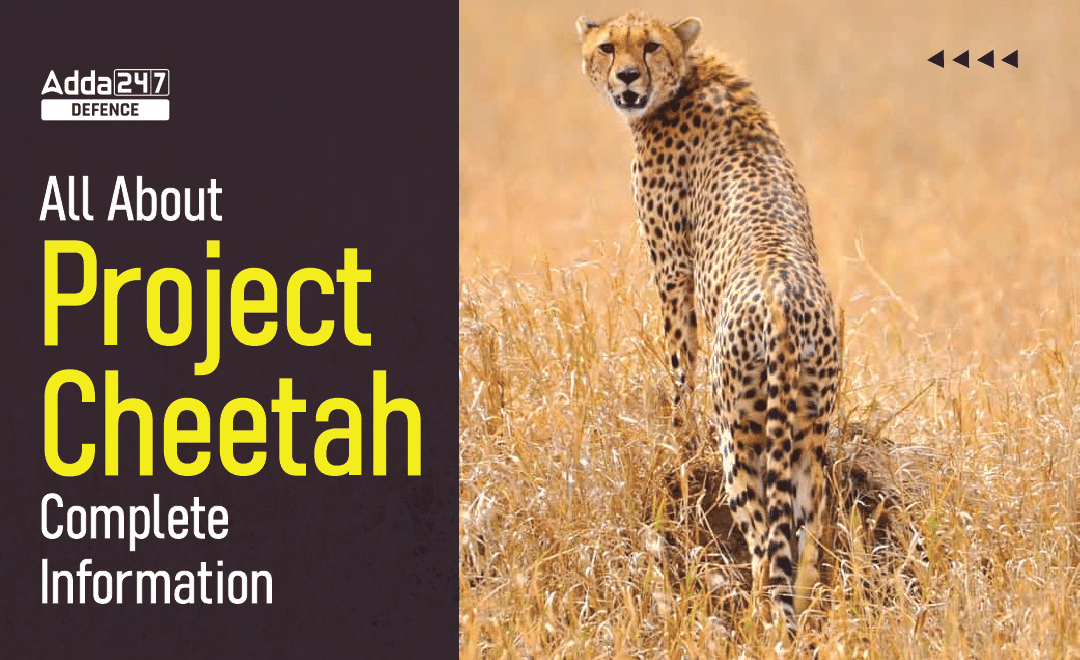Project Cheetah
Finally, the ambitious Project of the government has been launched with the name ‘Project Cheetah’ which aims to reintroduce the species of cheetah to its former habitat in the nation. The cheetah was declared extinct in India in 1952. Maharaja Ramanuj Pratap Singh Deo of Koriya (today’s Chhattisgarh) shot dead the last three recorded Asiatic cheetahs.
Now, after seven decades, on, September 17, PM Modi released 8 African cheetahs brought from Namibia at Kuno National Park of India.
Five female and three male cheetahs flew from Namibia to Jaipur in a special Boeing 747-400 aeroplane of IAF covering a distance of more than 8,000 kilometres in more than 20 hours. From Jaipur, they were taken to Kuno National Park of Madhya Pradesh.
Kuno National Park is a 748 square km protected area. To keep predators out of the park, which can hold a maximum of 21 cheetahs, a 12-km long fence has been built, where they will be kept and closely monitored for one month. Later, they will be released into a safe area.
What is the Project Cheetah?
- In January 2020, Project Cheetah was approved by the Supreme Court of India as a pilot programme with the motive of reintroducing the species of cheetah to India.
- The main motive of the project is to grow healthy meta-populations in India that allow the cheetah to execute its functional role as a top predator, the government had said earlier this year. The cheetah is a flagship grassland species; which plays a major role in conserving and preserving other grassland species in the predator food chain.
- The idea was conceptualised after the initiative taken in 2009 by the combined efforts of Indian conservationists and the Cheetah Conservation Fund (CCF), a not-for-profit organisation, headquartered in Namibia, which is working to save and rehabilitate the big cat in the Jungle.
- And after more than 12 years of talks, India and the Republic of Namibia signed a Memorandum of Understanding (MoU) in July 2020. As per the MoU, Over the next five years, Namibia promised to deliver 50 cheetahs to India and for now, the Namibian government gave a green flag to donate the eight felines to launch the programme.
- At the last moment, the “project cheetah” faced an obstacle when India refused to accept three of the eight cheetahs, claiming that they were captive-bred and might not survive in the wild. However, the tourism ministry of Namibia said that all eight animals were seized while they were young and had experienced hunting.
- Currently, only 7,000 cheetahs are surviving, primarily in the woodlands of Namibia, Botswana, and South Africa. This is the first project of its kind as for the first time, wild southern African cheetahs are being relocated to any other part of the world.
FAQs related to Project Cheetah
Q1. How many Cheetahs have been brought from Namibia to India?
Ans. 8 African cheetahs brought from Namibia at Kuno National Park of India.
Q2. What is the aim of Project Cheetah?
Ans. The aim of the project is to grow healthy meta-populations in India that allow the cheetah to execute its functional role as a top predator.
Q3. Indian Air Force used which aircraft to translocate cheetahs from Namibia to India?
Ans. Cheetahs flew from Namibia to Jaipur in a special Boeing 747-400 aeroplane of IAF



 IND–INDO CORPAT Exercise 2024
IND–INDO CORPAT Exercise 2024
 Major Dhyan Chand Khel Ratna Award Winne...
Major Dhyan Chand Khel Ratna Award Winne...
 Armed Forces Flag Day 2023: History and ...
Armed Forces Flag Day 2023: History and ...
